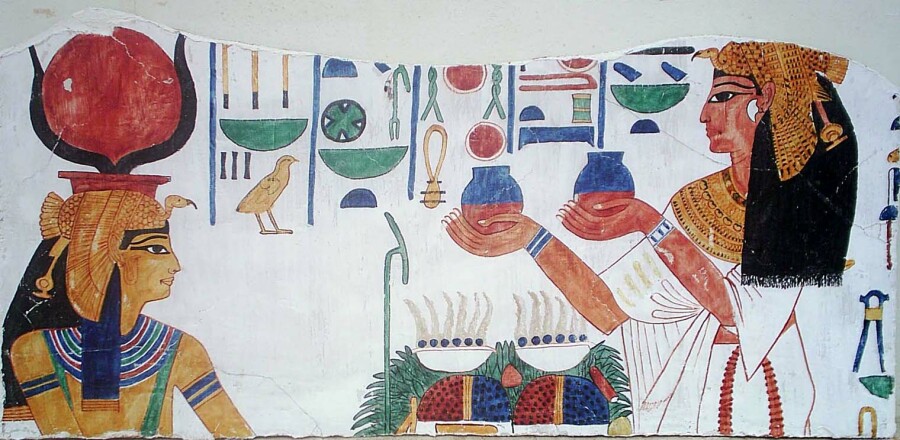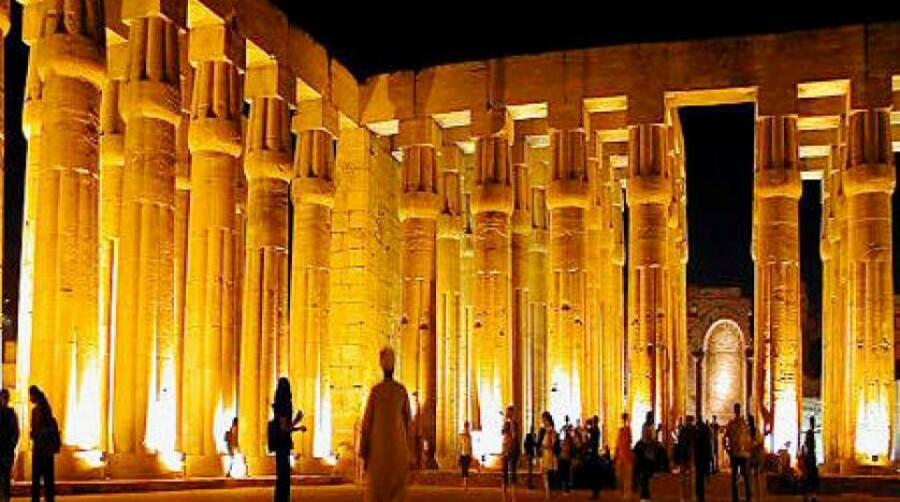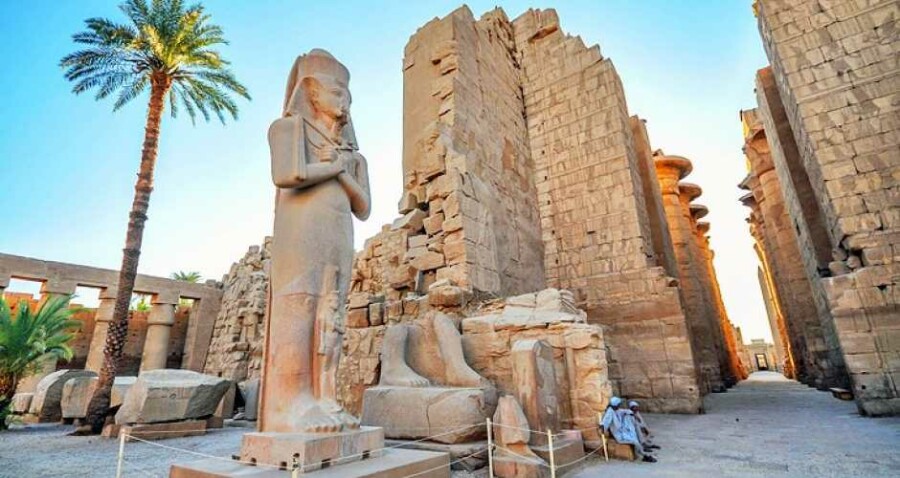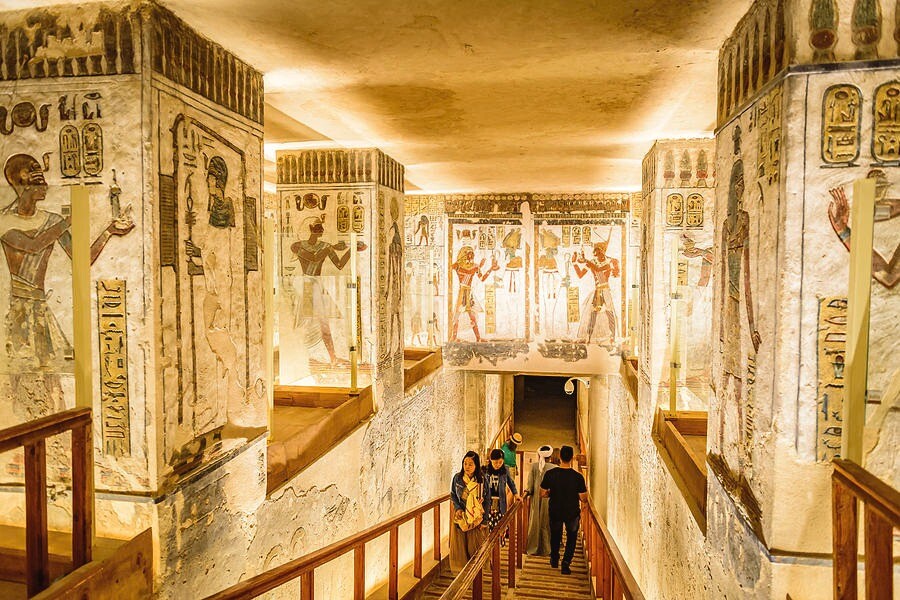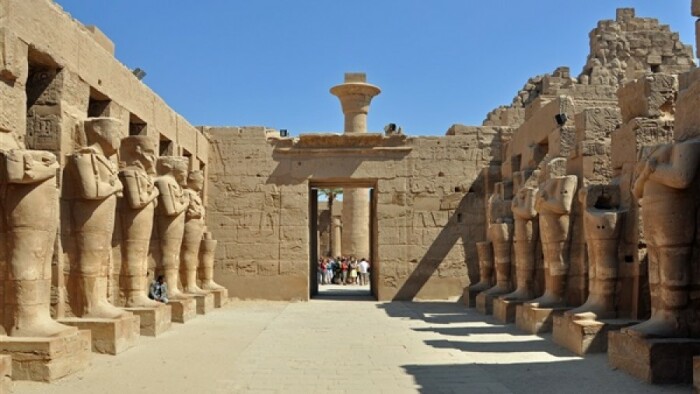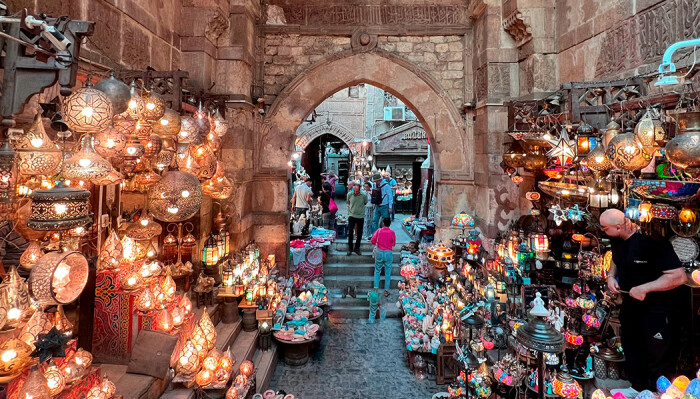Luxor ''combo'' - 3 nights / 4 days
Luxor.
Excellent
5/5
Duration
4 Days
Type
Private
Run
Everyday
Location
Luxor
Overview
Luxor, known as Tabet which means the Guarded land, Wast the sceptre of the great god Amun and the seat of the pharaohs' throne such as Ahmos, Amenhoteplll, Hatshepsut, Thotmsis lll, Horemheb, the capital of the Egyptian empire which lasted from 16th century BC to 11th century BC. Mentioned in the Homer's Iliad, (Thibeth of Hundred gates) named by Arab historians Alksoor means the palaces, the monuments established on the both Nile banks in Luxor represent a third of the human heritage still standing on the globe, UNESCO started a big project in Luxor in 2005 to make the city as the largest open museum in the world, which excavated the most of the great Avenue of Sphinxes connects between Karnak temples and Luxor temple, so far it is worthy to set aside enough time of your holiday planner to cover as much as you can of its highlights. Nile dream tours has a variety of programs to cover all interests.
For this itinerary ''Luxor combo'' you visit all the temples and opened tombs including the Seti I and Nefertari tombs.
For this itinerary ''Luxor combo'' you visit all the temples and opened tombs including the Seti I and Nefertari tombs.
Itinerary
Day 1
Upon arrival at Luxor Airport or the Train station, you will be greeted and assisted by our representative of Nile Dream Tours, then be transferred to the hotel.
Day 2
You will start your private tour after breakfast as you will meet your private qualified Egyptologist tour guide and get on your private, modern A/C van to start your tour as following.
Valley of the Kings is one of the oldest Royal burial places in all over the world. It consists of more than 60 rock-cut tombs carved out of a big mountain which looks like a huge natural Pyramid overlooking the Nile on the west bank of Luxor, more than a third of this number of tombs used for burying the great pharaohs ruled Egypt from the 16th century to 11th century B.C which considered the glamorous days of Ancient Egypt known as the New Kingdom period (18th, 19th and 20th dynasties), such as the famous pharaohs Thotmosis lll, Sity l Ramses ll, Ramses lll, etc. Each tomb consists of 3 or 4 large corridors decorated with bright and colorful scenes, paintings and carvings representing philosophical ideas and future vision of the Hereafter, which explained and illustrated in 9 Holly books such as the book of deads, the book of caverns etc..., those large corridors end by the most important point of the tomb which is the burial chamber supposedly to have the most valuable objects of the treasure buried around the Pharaoh's mummy, as well we can see a very large painting of goddess Nut the goddess of the Sky and the journey of day and night, some of these burial chambers still has the sarcophagus you hardly believe it is cut out of single piece of granite brought from Aswan quarries 130 miles south of Luxor and taken dawn more than 300fts into the mountain, So many excavators worked in Valley of the Kings, such as Howard Carter who discovered the discovery of the discoveries of the 20th century which is the intact tomb of King Tut Ankh Amon occurred in 4th of November 1922. Tourists in an ordinary program only can visit 3 tombs but according to this program, you will visit all the opened tombs including the tombs that need a private ticket like the tomb of King Tut (KV 62) discovered intact with all the treasure by Howard carter in 1922 also you will visit the tomb of King Ramses VI (KV 9)and finally the jewel of the crown the tomb of Seti I (KV 17) that still the best preserved ever found in the valley later you visit the western valley called the valley of the monkeys nearby the well-known Egyptologists Zahi Hawass, expect to find the tomb of Nefertiti there you visit the tomb of King Ay (WV 23) that includes unique scenes, such as hunting and fishing in the marshes normally found only in tombs of private people. The representation of the twelve baboons is also unique. The tomb was defaced after the burial, and the images of Ay were disfigured.
After that, we leave the valley heading to the house Howard Carter who came to Egypt in 1891, at the age of 17, where he was to work on the excavation of the Middle Kingdom tombs at Beni Hassan., later he worked under different archaeologists at sites including Amarna, Deir el-Bahari, Thebes, Edfu and Abu Simbel. Carter earned praise for using innovative and modern new methods to draw wall reliefs and other findings. Finally, his efforts were crowned in discovering the tomb of "King Tut The domed mud-brick house has been restored and decorated with pictures and tools of the excavation. An exact replica of Tutankhamun's burial chamber has been constructed on the edge of the garden along with an exhibition relating to the discovery of the tomb.
Lunch in a local restaurant later you will visit the temple, The Mortuary Temple of Queen Hatshepsut it's called "the Holy of Holies”. It is one of the best architecture buildings. It consists of three levels connected with each other by ramps and has different scenes on its walls depicting the divine birth of the Queen and her Commercial expedition to Punt Land. The temple is mainly dedicated to worship the supreme god Amon-Ra finally you stop by the two Colossi of Memnon which are two massive statues representing King Amenhotep III in a seating position. Then going back to the hotel, you have the possibility to enjoy an optional tour to Sound and light show in Karnak.
Valley of the Kings is one of the oldest Royal burial places in all over the world. It consists of more than 60 rock-cut tombs carved out of a big mountain which looks like a huge natural Pyramid overlooking the Nile on the west bank of Luxor, more than a third of this number of tombs used for burying the great pharaohs ruled Egypt from the 16th century to 11th century B.C which considered the glamorous days of Ancient Egypt known as the New Kingdom period (18th, 19th and 20th dynasties), such as the famous pharaohs Thotmosis lll, Sity l Ramses ll, Ramses lll, etc. Each tomb consists of 3 or 4 large corridors decorated with bright and colorful scenes, paintings and carvings representing philosophical ideas and future vision of the Hereafter, which explained and illustrated in 9 Holly books such as the book of deads, the book of caverns etc..., those large corridors end by the most important point of the tomb which is the burial chamber supposedly to have the most valuable objects of the treasure buried around the Pharaoh's mummy, as well we can see a very large painting of goddess Nut the goddess of the Sky and the journey of day and night, some of these burial chambers still has the sarcophagus you hardly believe it is cut out of single piece of granite brought from Aswan quarries 130 miles south of Luxor and taken dawn more than 300fts into the mountain, So many excavators worked in Valley of the Kings, such as Howard Carter who discovered the discovery of the discoveries of the 20th century which is the intact tomb of King Tut Ankh Amon occurred in 4th of November 1922. Tourists in an ordinary program only can visit 3 tombs but according to this program, you will visit all the opened tombs including the tombs that need a private ticket like the tomb of King Tut (KV 62) discovered intact with all the treasure by Howard carter in 1922 also you will visit the tomb of King Ramses VI (KV 9)and finally the jewel of the crown the tomb of Seti I (KV 17) that still the best preserved ever found in the valley later you visit the western valley called the valley of the monkeys nearby the well-known Egyptologists Zahi Hawass, expect to find the tomb of Nefertiti there you visit the tomb of King Ay (WV 23) that includes unique scenes, such as hunting and fishing in the marshes normally found only in tombs of private people. The representation of the twelve baboons is also unique. The tomb was defaced after the burial, and the images of Ay were disfigured.
After that, we leave the valley heading to the house Howard Carter who came to Egypt in 1891, at the age of 17, where he was to work on the excavation of the Middle Kingdom tombs at Beni Hassan., later he worked under different archaeologists at sites including Amarna, Deir el-Bahari, Thebes, Edfu and Abu Simbel. Carter earned praise for using innovative and modern new methods to draw wall reliefs and other findings. Finally, his efforts were crowned in discovering the tomb of "King Tut The domed mud-brick house has been restored and decorated with pictures and tools of the excavation. An exact replica of Tutankhamun's burial chamber has been constructed on the edge of the garden along with an exhibition relating to the discovery of the tomb.
Lunch in a local restaurant later you will visit the temple, The Mortuary Temple of Queen Hatshepsut it's called "the Holy of Holies”. It is one of the best architecture buildings. It consists of three levels connected with each other by ramps and has different scenes on its walls depicting the divine birth of the Queen and her Commercial expedition to Punt Land. The temple is mainly dedicated to worship the supreme god Amon-Ra finally you stop by the two Colossi of Memnon which are two massive statues representing King Amenhotep III in a seating position. Then going back to the hotel, you have the possibility to enjoy an optional tour to Sound and light show in Karnak.
Day 3
In the early morning, you have the possibility to enjoy Hot air balloon ride in Luxor (optional)
After breakfast, you will cross the Nile once again to the west bank to visit the Madinat Habu here Ramses III constructed his larger memorial temple the whole temple complex was surrounded by a massive fortified enclosure wall, with an unusual gateway at the eastern entrance, known as the pavilion gate. This structure, a copy of Syrian Migdal fortresses is something you would not expect to see in Egypt.
Later you visit the tombs of the nobles are more than 400 tombs belonging to nobles from the 6th dynasty to the Greco-Roman period, decorated with scenes of their daily lives. You have lunch in a local restaurant.
Afterwards, you visit the village of Deir el-Medina was a special village for craftsmen working on the royal tombs, and for their families. It functioned for almost 500 years. The oldest burials on the site date back to the time of Hatshepsut but there are tombs of the XVIII Dynasty found elsewhere.
Finally and before leaving definitely the west bank we visit the valley of queens is where the wives of pharaohs were buried in ancient times. We can visit all the opened tombs and moreover, as a dessert, we visit the tomb of Queen Nefertari, QV66 the great royal wife of Ramses II Living in the 19th dynasty 1295 b.c. Her full name was Nefertari merytmut, meaning "beautiful companion, beloved of Mut"., one of the best known of the Egyptian queens, next to Cleopatra, Nefertiti and Hatshepsut. The tomb was discovered by Ernesto Schiaparelli in 1904, it is the most beautiful and lavishly decorated in the whole of Egypt. It is not only a pictorial masterpiece but also a key to the Egyptian pantheon taking the visitor on a journey of discovery of Ramesside theology., But since the limestone in this Theban area is not of very high quality it was fractured by earthquakes, and moreover, the many serious problems caused by salt, affected its beautifully painted walls, so it was closed to the public in the 1950s. Repairs had been carried out trying to stabilise the serious cracks in the plaster, But it wasn't until 1986 that the first serious modern work was carried out in order to save the paintings, which was undertaken by the Getty conservation institute of America. Later, in February 1988, a full restoration started, carried out by an international team of scientists and in November 1995 it was reopened to the public, limiting the number of daily visitors but even so, the colours were badly affected and In January 2003 it was once again closed to the public.in 2016 It was opened again but at a very restricted level.
Lunch in a local restaurant, then you will be transferred to your hotel.
After breakfast, you will cross the Nile once again to the west bank to visit the Madinat Habu here Ramses III constructed his larger memorial temple the whole temple complex was surrounded by a massive fortified enclosure wall, with an unusual gateway at the eastern entrance, known as the pavilion gate. This structure, a copy of Syrian Migdal fortresses is something you would not expect to see in Egypt.
Later you visit the tombs of the nobles are more than 400 tombs belonging to nobles from the 6th dynasty to the Greco-Roman period, decorated with scenes of their daily lives. You have lunch in a local restaurant.
Afterwards, you visit the village of Deir el-Medina was a special village for craftsmen working on the royal tombs, and for their families. It functioned for almost 500 years. The oldest burials on the site date back to the time of Hatshepsut but there are tombs of the XVIII Dynasty found elsewhere.
Finally and before leaving definitely the west bank we visit the valley of queens is where the wives of pharaohs were buried in ancient times. We can visit all the opened tombs and moreover, as a dessert, we visit the tomb of Queen Nefertari, QV66 the great royal wife of Ramses II Living in the 19th dynasty 1295 b.c. Her full name was Nefertari merytmut, meaning "beautiful companion, beloved of Mut"., one of the best known of the Egyptian queens, next to Cleopatra, Nefertiti and Hatshepsut. The tomb was discovered by Ernesto Schiaparelli in 1904, it is the most beautiful and lavishly decorated in the whole of Egypt. It is not only a pictorial masterpiece but also a key to the Egyptian pantheon taking the visitor on a journey of discovery of Ramesside theology., But since the limestone in this Theban area is not of very high quality it was fractured by earthquakes, and moreover, the many serious problems caused by salt, affected its beautifully painted walls, so it was closed to the public in the 1950s. Repairs had been carried out trying to stabilise the serious cracks in the plaster, But it wasn't until 1986 that the first serious modern work was carried out in order to save the paintings, which was undertaken by the Getty conservation institute of America. Later, in February 1988, a full restoration started, carried out by an international team of scientists and in November 1995 it was reopened to the public, limiting the number of daily visitors but even so, the colours were badly affected and In January 2003 it was once again closed to the public.in 2016 It was opened again but at a very restricted level.
Lunch in a local restaurant, then you will be transferred to your hotel.
Day 4
After breakfast, you visit the East bank.
The Egyptians believed that towards the end of the annual agricultural cycle the gods and the earth became exhausted and required a fresh input of energy from the chaotic energy of the cosmos, to accomplish this magical regeneration the Opet festival was held yearly the procession began at Karnak and ended at Luxor Temple
Karnak Temple. a city of temples built over 2,000 years It is the largest religious building ever made, covering about 1.5 km by 0.8 km could hold ten average European cathedrals. The great temple at the heart of Karnak is so big that St Peter’s, Milan, and Notre Dame Cathedrals would fit within its walls. with the largest number of pylons in all the Egyptian temples dedicated to the sacred triad of Thebes Gods, Amun, his wife Mut, and their son Khonsu
Luxor Temple Lying at the other end of Thebes connected with Karnak by the avenue of sphinxes the temple was built by Amenhotep III completed by Tutankhamun and Horemheb from the XVIII dynasty and finally Ramses II from the XIX dynasty added the first pylon later the sanctuary was reconstructed by Alexander the Great
Also, we visit Luxor museum was opened in 1975 and contains a valuable collection from the Predynastic to the Islamic era. In 1992 another hall was added contains the status found in Luxor temple cached and in 2003 a third hall called the glory of Thebes was added highlighting the powerful kings of the golden era during the new kingdom.
Lunch in a local restaurant then you will be transferred to the airport or the train station.
The Egyptians believed that towards the end of the annual agricultural cycle the gods and the earth became exhausted and required a fresh input of energy from the chaotic energy of the cosmos, to accomplish this magical regeneration the Opet festival was held yearly the procession began at Karnak and ended at Luxor Temple
Karnak Temple. a city of temples built over 2,000 years It is the largest religious building ever made, covering about 1.5 km by 0.8 km could hold ten average European cathedrals. The great temple at the heart of Karnak is so big that St Peter’s, Milan, and Notre Dame Cathedrals would fit within its walls. with the largest number of pylons in all the Egyptian temples dedicated to the sacred triad of Thebes Gods, Amun, his wife Mut, and their son Khonsu
Luxor Temple Lying at the other end of Thebes connected with Karnak by the avenue of sphinxes the temple was built by Amenhotep III completed by Tutankhamun and Horemheb from the XVIII dynasty and finally Ramses II from the XIX dynasty added the first pylon later the sanctuary was reconstructed by Alexander the Great
Also, we visit Luxor museum was opened in 1975 and contains a valuable collection from the Predynastic to the Islamic era. In 1992 another hall was added contains the status found in Luxor temple cached and in 2003 a third hall called the glory of Thebes was added highlighting the powerful kings of the golden era during the new kingdom.
Lunch in a local restaurant then you will be transferred to the airport or the train station.
Included/Excluded
- Meet and greet service by our representatives upon your airport arrival.
- Transfers in private vehicle with air conditioning.
- 2 Airport transfers.
- English-speaking tour guide during your excursions.
- 1 Bottled mineral water every day.
- 3 Day Tours.
- Main Entrance Fees.
- Excursions according to the itinerary.
- This itinerary could be changed in order according to the circumstances of service not to be canceled.
- 3 meals during visits at a local restaurant.
- 3 meals in a local restaurant.
- Accommodation in Luxor for 3 nights, including daily breakfast.
- Tourism Police Permission.
- Tax.
- Transfers in private vehicle with air conditioning.
- 2 Airport transfers.
- English-speaking tour guide during your excursions.
- 1 Bottled mineral water every day.
- 3 Day Tours.
- Main Entrance Fees.
- Excursions according to the itinerary.
- This itinerary could be changed in order according to the circumstances of service not to be canceled.
- 3 meals during visits at a local restaurant.
- 3 meals in a local restaurant.
- Accommodation in Luxor for 3 nights, including daily breakfast.
- Tourism Police Permission.
- Tax.
- International airfare to Egypt.
- Entry Visa to Egypt.
- Personal spending.
- Optional Activities.
- Drinks.
- Tipping.
- Anything not mentioned above.
- Entry Visa to Egypt.
- Personal spending.
- Optional Activities.
- Drinks.
- Tipping.
- Anything not mentioned above.

